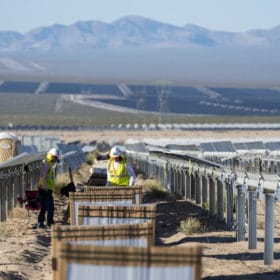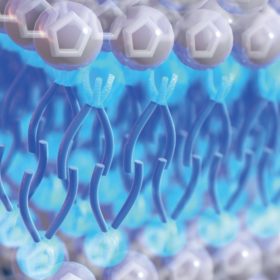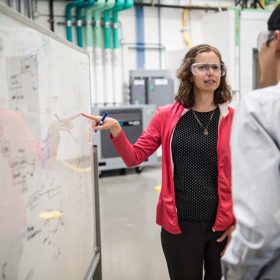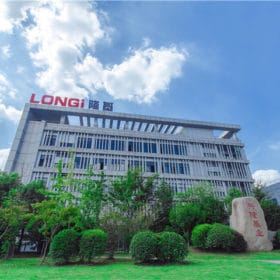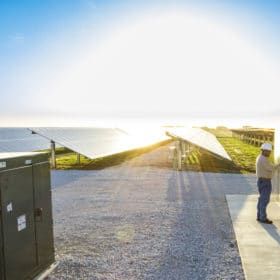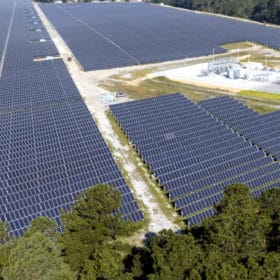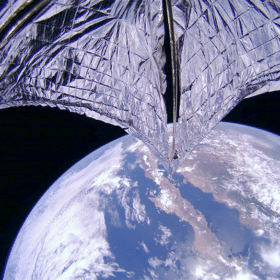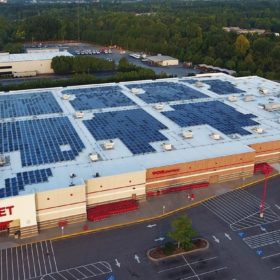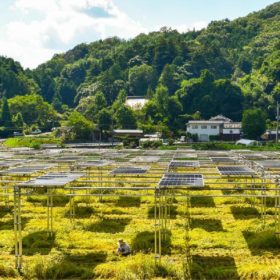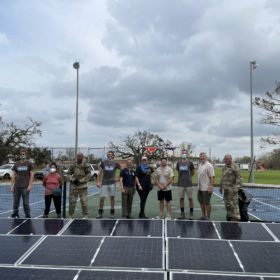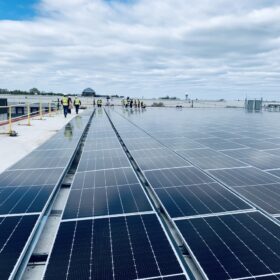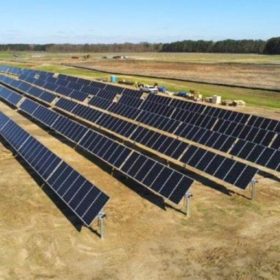Solar met 2.7% of U.S. electric demand during the first half of 2019
Marginally higher solar output and lower electricity use allowed the share of solar in the overall mix to rise. California met more than 17% of its demand with solar during the six-month period, and solar + wind met 10.4% of the nation’s demand.
‘New and strange properties’ provide a boost to energy storage
MIT scientists have developed a class of liquid electrolyte with properties they say could open up new possibilities for improving the performance and stability of lithium batteries and supercapacitors.
Stitching together the grid of the future
A vision of a decentralized, renewable-powered electricity grid is being brought a step closer by scientists at the U.S. National Renewable Energy Laboratory. Their project, Autonomous Energy Grids, aims to take an overarching look at the solutions that will power this grid of the future, and to fill any gaps that appear between them.
Trina cells on a championship solar car, LONGi achieves highest bankability rating: pvMB 8/12/19
Happy Monday and welcome to this edition of the pvMB. Today we’ll be looking at Engie’s storage installation for a school district, Virginia’s Fairfax County seeking solar and more!
Wind, solar, batteries and carbon taxes in California and Texas
Researchers show how deploying 60 GW of renewables using various types of energy storage and carbon tax values in California and Texas increase CO2 reductions, while lowering electricity curtailment – but in vastly different amounts.
Solar brings in the big bucks for local governments
A new report from North Carolina Sustainable Energy Association shows the dramatic increase in tax revenue that solar projects bring. And for the future of development, this money talks, loudly.
The people vs. HB 6, Con Edison reaches 250 MW installed: pvMB 7/25/19
Two things are absolutley certain right now. It’s Thursday and you’re reading the pvMB. Today we’ll be looking at Independent developers dominating the NC solar auction, Sunnova announcing share prices, the very cool LightSail 2 spacecraft and more!
Target defends its crown as largest adopter of on-site corporate solar power
The top on-site home for corporate solar remains the same in SEIA’s 2018 Solar Means Business Report, but new challengers have entered, as the report includes off-site solar for the first time.
A pocket chart to maximize solar power deployment
Researchers have built a matrix outlining how solar power in various deployment models generates benefits greater than just clean electricity. This will help policy makers maximize energy decisions with limited resources.
Waste heat is not cool, say scientists
Engineers at the University of Utah have developed a tiny device which they say could increase the performance of PV panels and other electronic devices by converting energy lost as heat back into electricity.
